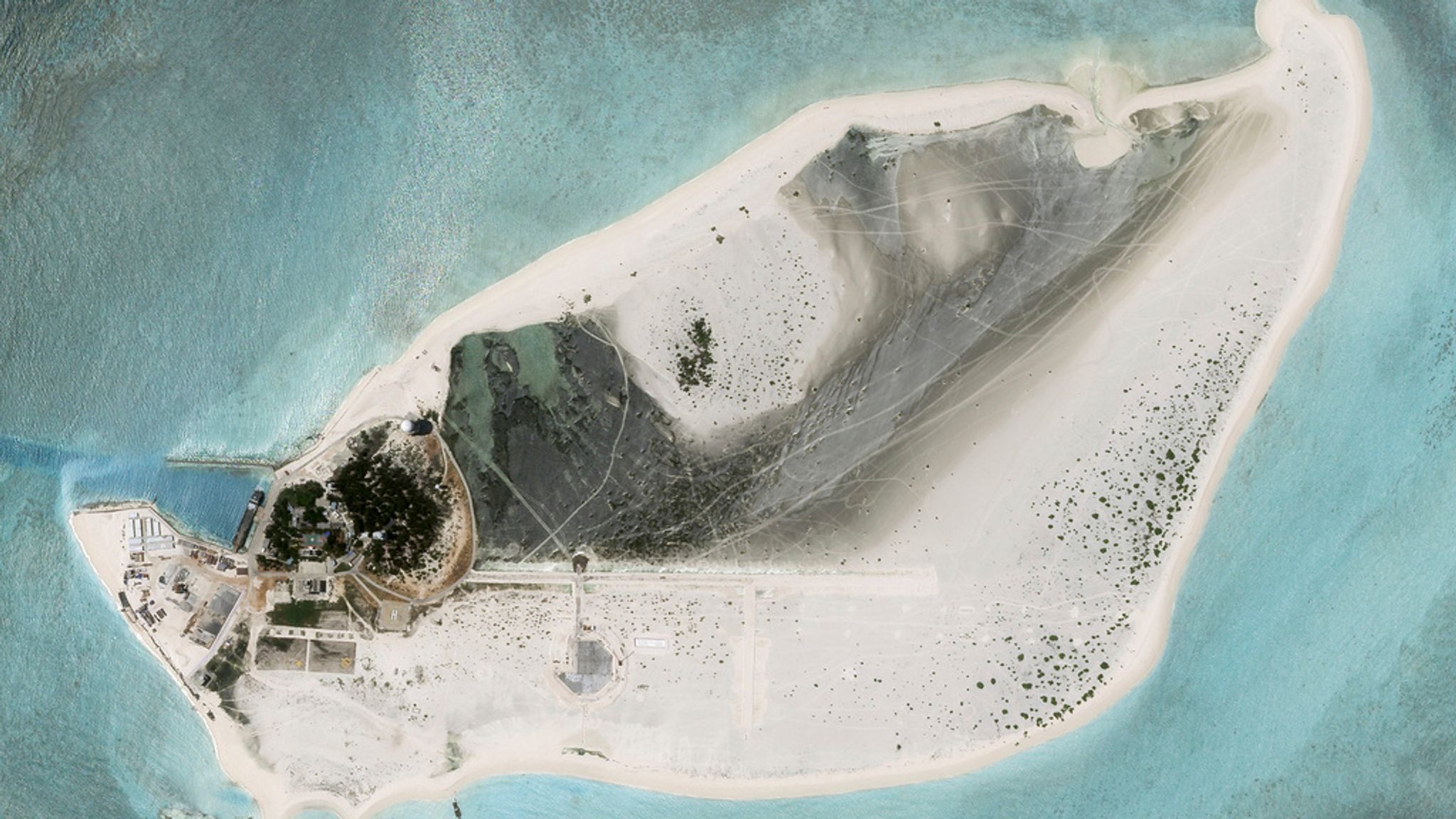OPED By Vaishali Basu Sharma
According to satellite photos analyzed by The Associated Press, China appears to be constructing an airstrip on a disputed South China Sea island that Vietnam and Taiwan also claim.
The activity was spotted on the island Triton of the Paracel group (also known as the Xisha Islands in Chinese and Hoàng Sa Archipelago in Vietnam). Construction on Triton Island is a belligerent move because it is part of a disputed archipelago in the South China Sea (SCS).
Spread over an area of 15,000 square kilometers Paracel archipelago includes about 130 small coral islands and reefs, roughly equidistant from the coast of Vietnam and China’s island province of Hainan.
China has had a few buildings with radar arrays and a helipad on Triton Island for years. Construction on the airstrip was first discerned through satellite photos in early August.
The satellite images reveal a runway over 600 meters (2,000 feet) in length, which may be sufficient for turboprop aircraft and drones, but will not accommodate fighter jets or bombers.
The pictures also clearly show large numbers of vehicle tracks running across much of the island, along with containers and heavy construction equipment.
Since the Battle of the Paracel Islands in January 1974, the People’s Republic of China (PRC) has had de facto control of the archipelago. The battle, which took place towards the end of the Vietnam War, was a confrontation between the South Vietnamese Navy and the Chinese Navy for control of the vicinity. For now, China, Vietnam, and Taiwan all claim de jure sovereignty over the Paracel.

China claims most of the South China Sea, although it lies hundreds of miles south of its shores. As such, Triton is not the first island among the Paracel group to undergo Chinese infrastructure development.
In 2016, Woody Island was equipped with an upgraded airport, seaport, and city hall. China undertakes major infrastructure development to support its territorial claims over the archipelago.
In 2015, satellite images revealed China’s construction of a 3,000-meter runway, large enough for heavy military transport planes and fighters, on the disputed Spratly Islands. The photos were released then by Asia Maritime Transparency Initiative (AMTI), showing “Two helipads, up to 10 satellite communications antennas, and one possible radar tower …” In 2016, an international tribunal in The Hague dismissed Beijing’s sweeping claims to the region.
Over the past decade, Beijing has carried out construction activities at four unoccupied features in the Spratly Islands, executing land reclamation projects. It was constructing artificial islands at four places in the disputed Spratly Islands of the SCS – Lankiam Cay (Panata Island), Whitsun Reef (Julian Felipe Reef), Sandy Cay, and Eldad Reef.
After the construction of artificial islands in contested waters, in 2022, speaking to the Associated Press in an interview, US Indo-Pacific commander Admiral John C Aquilino said that China had militarized at least three of several islands it built in the disputed SCS with anti-ship and anti-aircraft missile systems, laser and jamming equipment and fighter jets.
He said, “Over the past 20 years, we’ve witnessed the largest military buildup since world war two by the PRC.”
Aside from Brunei, Malaysia, Philippines, Taiwan, and Vietnam, which all have overlapping claims, the US, Australia, and Japan also oppose China’s reclamation of islands in the South China Sea. They have all expressed concern over China’s infrastructure building and aggressive maritime claims in the South China Sea.
In 2021, the Philippines also amassed vessels at Whitsun Reef after more than 200 Chinese militia ships were spotted in a swarming maneuver. Although neither the US, Australia, nor Japan is a direct participant in the South China Sea disputes and does not take a stance on overlapping territorial claims, each is interested in ensuring regional stability and preserving Freedom of Navigation (FON) in the SCS.
The area is a strategic and resource-rich key waterway connecting the Strait of Malacca and the Pacific.
- Vaishali Basu Sharma is an analyst of strategic and economic affairs. She has worked as a consultant with India’s National Security Council Secretariat (NSCS) for nearly a decade. She is presently associated with the New Delhi-based think tank Policy Perspectives Foundation.
- The author can be reached at postvaishali (at) gmail (dot) com.




